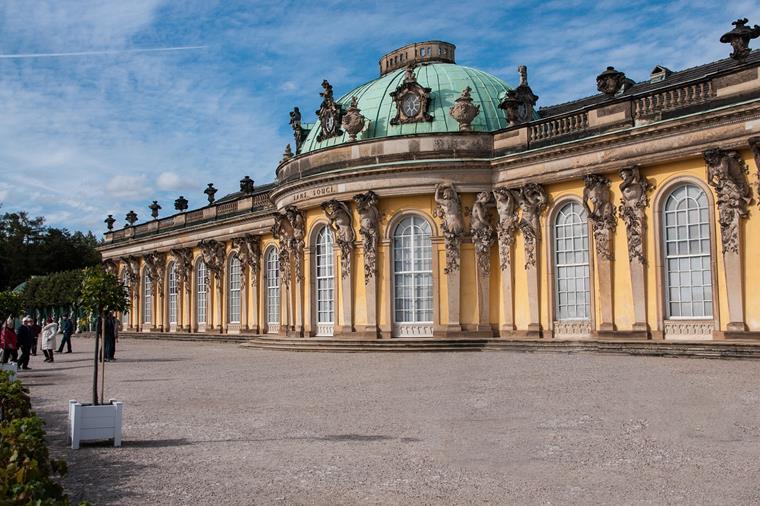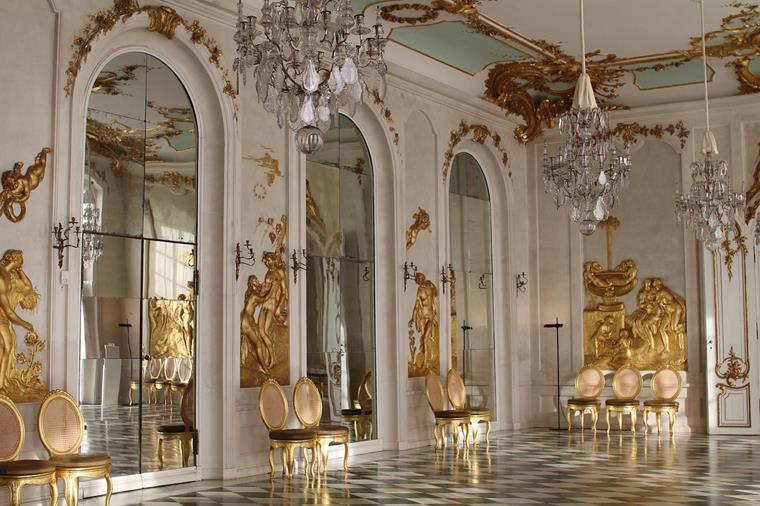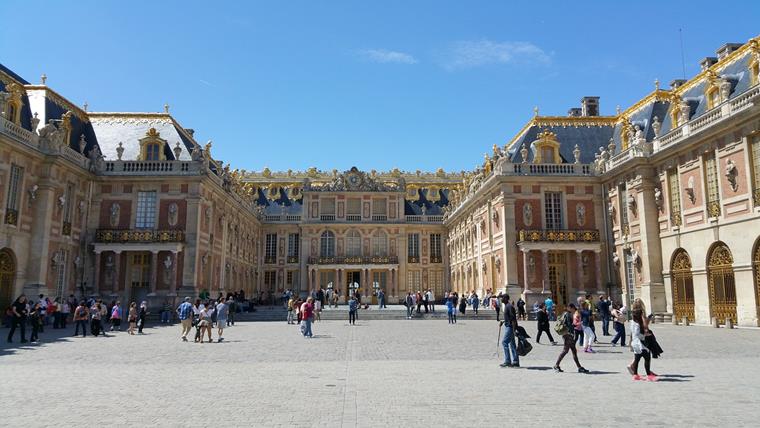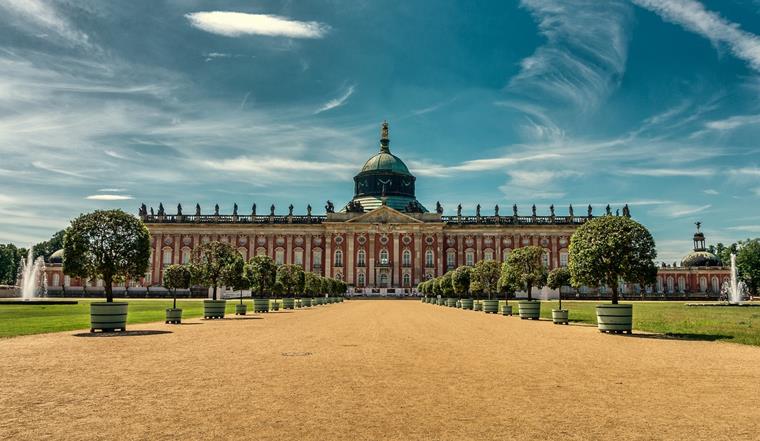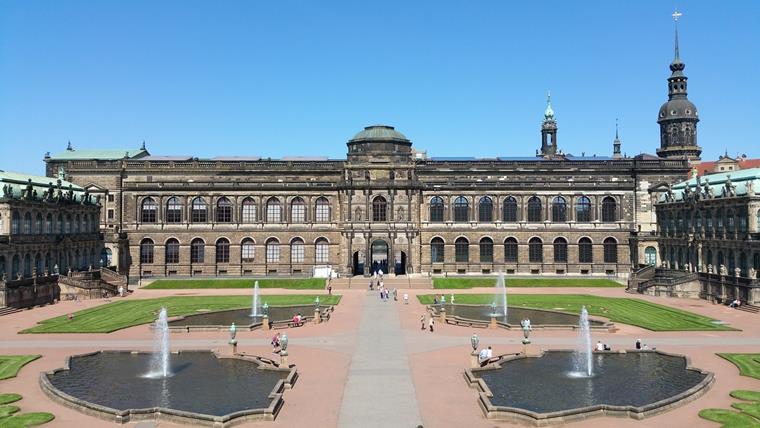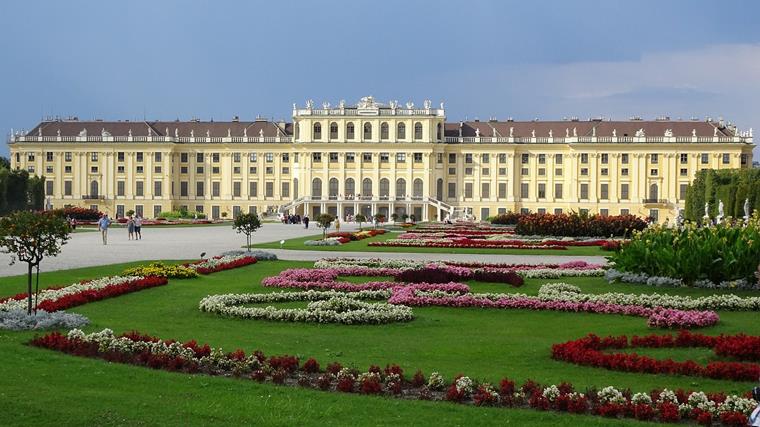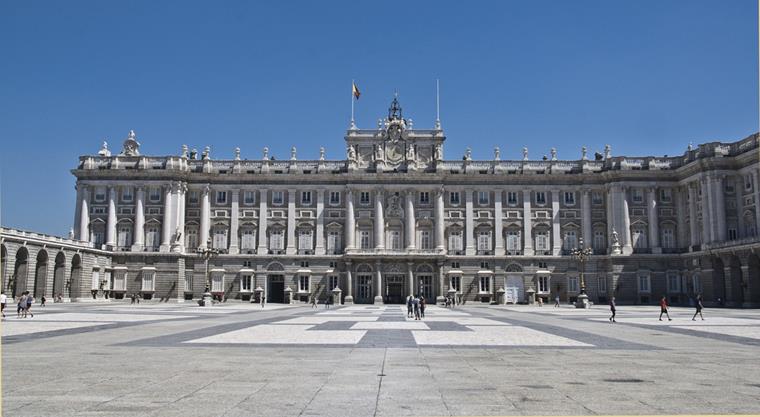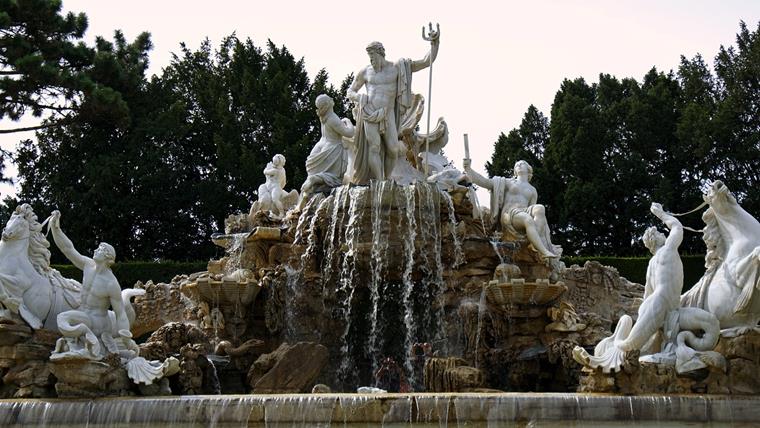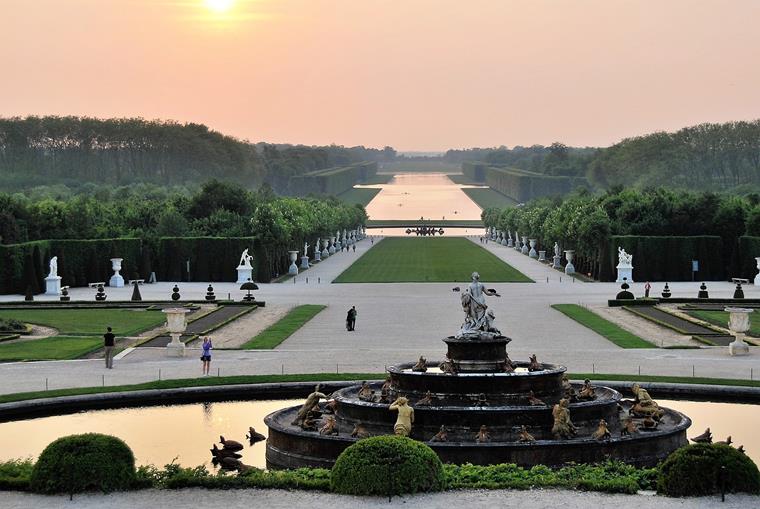During the Renaissance period, builders looked back to the past. They used the ancient knowledge of antiquity and further developed the ideas and ancient techniques. As a result, they created impressive structures. It was often a matter of demonstrating the majesty and power of the respective ruler.
In the following era, this effect was reinforced again. The 17th and 18th centuries were marked by upheaval and rebellion. Wars of succession, revolutions against absolutist rulers: In this era of contrasts, vanitas and memento mori were directly juxtaposed with the opulent joie de vivre of carpe diem.
Many monarchies were teetering dangerously towards the abyss. The people questioned the God-given ruling power of the royal houses. The Catholic Church was also significantly tarnished after Martin Luther's Reformation. Reason enough to reach out to the people more to gain their trust? Far from it.
Rather, the claim to power of absolutism and the Catholic Church were to be stressed as clearly as possible. No wonder, then, that the most magnificent castles and churches were built in this era. So what defines the architectural style of the Baroque period?
Features of Baroque Architecture
Anyone who stands in front of a Baroque building knows about the spacious grounds around the main building(s). Symmetrically landscaped gardens present elaborate trick fountains that are a work of art in themselves thanks to hydraulic systems.
Instead of showing simplicity or humility, Baroque impresses with a strong inclination towards opulence. Whether art or architecture: Everywhere you look, elaborate decorations, ornate sculptures, and precious materials such as marble and gold catch the eye.
The facade and interior design were always characterized by curved dynamic lines and almost theatrical productions on detailed frescoes or in the form of elaborate decorations. The Counter-Reformation was pursued by the Catholic Church by all means possible, including through art and architecture. Many of these works, therefore, showed ecclesiastical motifs. As if it would be able to mute critical voices simply by calling loudly enough for splendor.
Baroque buildings can often be recognized by their facades. Strong symmetry and a central, emphasized entrance create the first impression. The next thing that catches the eye are the preferably large domes and high towers, which are intended to demonstrate the power of the monarchy and the church to the outside world.
Furthermore, the almost inflationary use of gold and marble is particularly conspicuous. Moreover, there is the strong color scheme of the buildings. Visitors to these buildings often search in vain for restrained pastel colors or harmonic earth tones.
Inside, illusionistic artworks, mirrors, and stucco work on ceilings and walls additionally ensure that visitors feel both lost and overwhelmed at the same time: a pure show of power. The masterful use of light and shadow, achieved by large windows, further enhances this effect. A certain sense of drama runs through the entire structure.
Examples of Baroque Architecture
Many well-known buildings from the times of absolutism and Counter-Reformation were built in the distinctive Baroque style. We present some of them to you in detail and look at their special features. Each region shows special characteristics and interpretations of the Baroque style. However, they have one thing in common: grandiosity, magnificence, and a penchant for drama.
Palace of Versailles
Versailles, France
We start with probably the most famous building of this era. The Palace of Versailles has been taken numerous times as a model for other palaces and a prime example of high palace architecture. It is hard to surpass in elegance and grandiosity, although its beginnings were relatively modest.
This small hunting castle was built in 1623 for the King Louis XIII of France. The size alone caused ridicule and scorn from the rest of the nobility. Thus, it was expanded into a castle with three wings between 1631 and 1634. When Versailles was named as the future seat of government of King Louis XIV in 1667, something had to change.
Between 1678 and 1697, the castle was expanded three times, turning into a vast palace complex. The Sun King used about three percent of the state budget for the water supply and water features of the palace complex alone.
Particularly famous is the Hall of Mirrors with a length of 75 m (246 ft) and a width of 10 m (33 ft), including 30 ceiling frescoes, dedicated to the king, and a total of 357 mirrors. To date, Versailles has been the scene of special events several times. On June 29, 1919, a peace treaty between Germany and France was signed here.
Nowadays, extraordinary parliamentary sessions take place behind the gilded gates of the palace, and distinguished guests are received here. In June 2021, the luxury hotel "Grand Contrôle" opened in an adjoining building.
Sanssouci Palace
Potsdam, Germany
Built by order of Frederick the Great, Sanssouci Palace is a true piece of art. This was where the Prussian king preferred to seclude himself with his dogs. Understandable, as the single-story castle and the famous terrace vineyards below are a real eye-catcher.
The name of the castle – carefree – goes back to the king's heartfelt wish to create a place where he would have only peace and quiet around him. The one-story structure was only planned as a summer residence, but Frederick the Great stayed here most of the time throughout his life.
After the hill on which the complex stands today, had been terraced for vineyards, Frederick the Great had the palace built on it from 1745 to 1747. He strictly rejected a basement or an additional floor. In contrast to many other Baroque buildings, hardly any renovations have taken place here. In the 19th century, only a western wing for the ladies in waiting and an eastern side wing for the kitchen and wine cellar were added.
The Baroque predilection for curved lines and domes is particularly evident here. His love for the castle went so far that Frederick the Great wanted to be buried in a crypt on the uppermost vineyard terrace. However, this wish was only finally fulfilled in 1991, when his remains were transferred there.
Dresden Zwinger
Dresden, Germany
There is also a palace building in Germany whose name sometimes causes confusion: the Dresden Zwinger. That doesn't really sound comfortable or aesthetically pleasing, which is probably due to the fact that it was originally a square located between the inner and outer fortification walls of the city. Here, the invading enemy was trapped in that part of the fortification ("Einzwingen" in German). That's where the name comes from. Today, only the remains of the fortification walls in the Zwinger moat remind us of this past.
The history of the palace's construction began with Augustus the Strong. He had a very special hobby: He collected orange trees and other Mediterranean container plants. So in 1709, he commissioned the construction of an orangery on Zwingerplatz, which would serve as a winter quarters for the tender plants.
Later, court parties were also held there, typical of the Baroque period, not only for the amusement and entertainment of court society, but superficially as a means of displaying wealth and imperial power. The expansion into a Baroque palace complex took several years. From 1712 to 1728, numerous accommodations and areas were added, including a long gallery and the crown gate.
In the World War II, the Zwinger was almost completely destroyed. The reconstruction and renovation work lasted until 2017, in fact. Only then did the orange trees return and complete the palace building in its former beauty. Even today, the inner courtyard is a true oasis of calm in the middle of the city.
Schönbrunn Palace
Vienna, Austria
We leave Germany and take a look at a neighboring country, Austria. Here is a Baroque castle, a landmark of the capital, Vienna: Schönbrunn Palace. Like most famous Baroque buildings, it was built as a hunting castle in the 17th century, under Leopold I. After 1743, Empress Maria Theresa had it expanded into a sumptuous residence.
The facade in particular reveals the already mentioned claim to power of the Habsburg dynasty as a typical feature of the Baroque period. Emperor Josef II ordered in the 1780s that all buildings of the state of Austria and the House of Habsburg were to be painted in this special ochre color. Today, it is still referred to as "Schönbrunn yellow".
Schönbrunn is a place steeped in history. In 1762, the European powers negotiated the reorganization of Europe, known as the Congress of Vienna, in the rooms of the castle. Napoleon Bonaparte resided here and signed the Peace of Schönbrunn with Austria in 1805.
At the end of the monarchy after World War I, Schönbrunn was converted into a public museum, but sustained heavy damage during World War II, and has been carefully restored.
Today, Schönbrunn is one of the most beautiful Baroque complexes in Europe. The complex is a UNESCO World Heritage Site and includes Schönbrunn Palace, a zoo, the Gloriette Pavilion, a desert house, and the famous Neptune Fountain.
Royal Palace of Madrid
Madrid, Spain
If you want to visit the Royal Palace of Madrid, you should take sunglasses. This is not just because of the sun; the outer walls of the palace are made of granite and limestone: bright white, so bright that it is almost blinding. With a ground area of 135,000 m² (1,453,128 ft²) and 3,418 rooms, the Royal Palace secures the position of the largest royal palace in Europe.
Before the royal palace was built here, the Alcázar fortress stood on the site. Although it was considered the official residence of the King of Spain, it was hardly worthy of the title. Thus, it was almost lucky that the entire castle burned down on Christmas Eve, 1734. A replacement was needed, as magnificent as possible, in typical Baroque style, of course!
Philip V commissioned the new building, and in 1738, the work began; it was finished in 1764. The result is an opulent Baroque building with influences of the Italian Renaissance. Only specialists of the time worked on this architectural masterpiece. Like most Baroque residences, the Royal Palace was extended. King Charles III commissioned the reconstruction and further expansion of the palace.
Numerous sculptures of various members of the royal family as well as historical figures can be found throughout the palace grounds. It is still the official residence of the Spanish royal family. Today, the Palace is a museum. It is also used for receptions, ceremonies, and official occasions. The Kings of Spain have their residence in the Zarzuela Palace.
Conclusion: Baroque Architecture
We can summarize that there are motifs in Baroque architecture similar to those of Gothic and Renaissance buildings. This architectural style was primarily intended to demonstrate power. Distinctive features of the Baroque style are bright colors and opulent decorations made of gold, marble, and other precious materials.
Wealth, power, and fame: these were the guiding principles behind the majority of magnificent Baroque buildings. In our modern construction industry, we often think a little differently, of course. But what can we learn from the master builders of the Baroque era that we can incorporate into our modern construction industry?
What can we learn from the Baroque era?
Visual harmony in architecture was capitalized in the Baroque period. The aesthetic decorations were nestled against curved, organic lines, creating a dynamic appearance that is attracts attention. In the days of absolutism, a building was art, which became more than clear in each of these buildings. A little more aesthetic appeal, especially on the facades of public buildings, would also be welcome today. Undecorated concrete cubes don't look pretty, no matter from which perspective.
To ensure that Baroque buildings could function as such, a number of professional groups worked together. These groups included artists, such as painters and sculptors, as well as horticulturists and engineers, who took care of the hydraulic systems for irrigation. Only together could they succeed in creating a self-contained unique facility. They had the big picture, the goal, in mind.
This way of thinking is missing in the construction industry today. Many professional groups work side by side on the same construction project, which ultimately fails, or where problems, arise if no clear agreements are made. We could prevent this by involving all concerned parties in the planning process from the very beginning.
Baroque builders were also better positioned in terms of durability and sustainability. The use of durable materials, such as sandstone, kept the structural fabric stable even under the weight of centuries. Renovations were also not a problem. No buildings were demolished in order to build new ones; the existing buildings were used.
Unfortunately, in our modern world, far too many structures are simply demolished. Not because these had reached the end of their lifespan, but simply out of an unwillingness to work on a solution with the existing structure as a basis. A little more creativity, flexibility, and innovative thinking would certainly lead to beautiful converted buildings. Without having to further pollute our environment unnecessarily.
